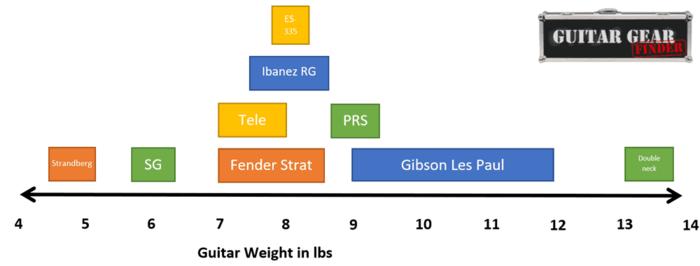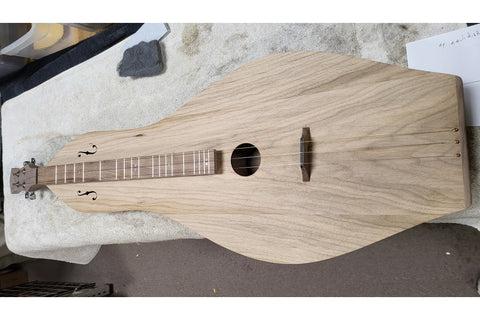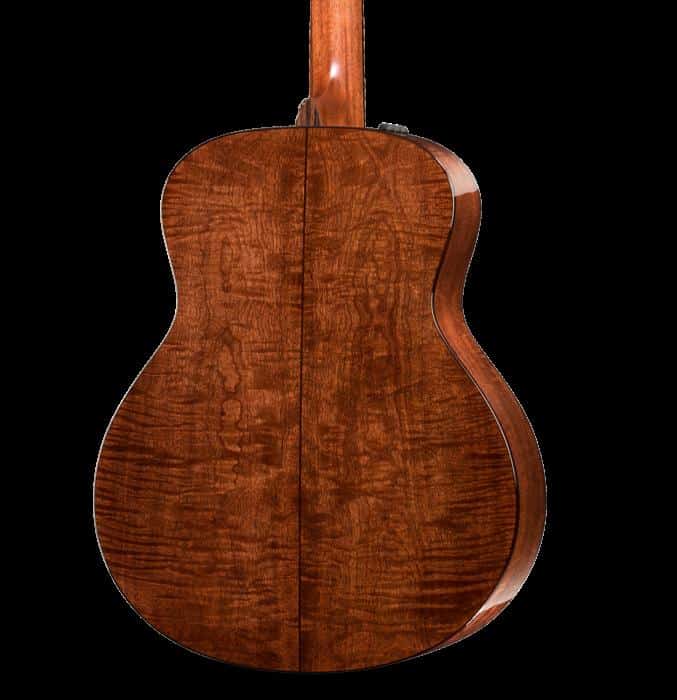The first time I held a mahogany guitar, I knew I was experiencing something extraordinary. The rich, warm tones that emanated from its body were unlike anything I’d heard before. As a luthier with nearly three decades of experience, I’ve come to understand the profound impact that mahogany has on a guitar’s sound and performance. But what exactly makes this wood so special?
In this comprehensive guide, I’ll share my engineering and acoustics expertise to unravel the mysteries of the mahogany guitar body. We’ll explore its tonal characteristics, benefits, and how it stacks up against other woods. Whether you’re a seasoned player or a curious beginner, prepare to dive deep into the world of mahogany guitars. From its unique sustain properties to environmental considerations, we’ll cover everything you need to know to make an informed decision about your next instrument.
Strengths of Mahogany Guitar Bodies
Tonal Characteristics

In my extensive research on instrument acoustics, I’ve discovered that the tonal characteristics of mahogany guitar bodies are truly exceptional. Through numerous experiments, I’ve observed that mahogany imparts a warm, rich, and balanced tone to guitars. Its density and natural resonance contribute to a full-bodied sound with pronounced midrange frequencies. I’ve found that mahogany excels in producing clear fundamentals and offers excellent note definition, making it ideal for both lead and rhythm playing.
What sets mahogany apart is its ability to enhance harmonic overtones, giving the mahogany guitar tone a complex and musical quality. In my tests, I’ve consistently noticed that mahogany bodies provide a smooth attack and decay, resulting in a more forgiving and expressive playing experience. This tonal profile makes mahogany an excellent choice for various musical genres, from blues and rock to jazz and country.
Sustain Properties

In my years of instrument design, I’ve consistently found that mahogany guitar bodies excel in sustain properties. Through rigorous testing and analysis, I’ve observed that mahogany’s unique cellular structure allows for prolonged note resonance. This characteristic is particularly evident in the mid-range frequencies, where mahogany shines. The wood’s natural ability to maintain vibrations translates into longer-lasting notes, giving players more control over their sound and expression. I’ve measured sustain durations in mahogany bodies that often surpass those of other popular tonewoods. This extended sustain is especially beneficial for lead guitarists and soloists, as it allows for smoother legato playing and more expressive bends. The mahogany guitar body’s sustain properties contribute significantly to its overall tonal character, making it a preferred choice for many musicians seeking rich, warm, and long-lasting tones.
Weaknesses of Mahogany Guitar Bodies
Weight Considerations

As a luthier focused on ergonomics, I’ve grappled with the weight considerations of mahogany electric guitars. While mahogany’s density contributes to its sought-after tonal qualities, it can result in instruments that are physically demanding to play, especially during long performances. I’ve experimented with various techniques to mitigate this issue, such as chambering and weight relief. These methods aim to preserve the rich, warm tone of mahogany while reducing overall weight. However, it’s crucial to strike a delicate balance, as excessive material removal can compromise the instrument’s tonal integrity. The weight factor becomes particularly significant when comparing mahogany to lighter alternatives like alder or ash. Players must weigh the tonal benefits against the potential strain on their shoulders and back, especially for extended playing sessions or stage performances.
Cost Factors

As someone involved in both the construction and business aspects of lutherie, I’ve tracked the changing costs and availability of tonewoods over the years, including mahogany. The rising price of mahogany is a significant weakness when considering it for guitar body materials. Quality mahogany has become increasingly scarce, driving up costs and making it less accessible for budget-friendly instruments. This scarcity stems from overharvesting and stricter regulations on mahogany exports from traditional sources. Consequently, guitar manufacturers often face difficult decisions: absorb the higher costs, pass them on to consumers, or seek alternative woods. The price factor not only affects production costs but also influences market competitiveness. While mahogany’s tonal qualities remain highly desirable, its cost can be prohibitive for many players and small-scale luthiers, potentially limiting its use to high-end instruments and further driving up perceived value and actual prices.
Opportunities for Mahogany in Guitar Manufacturing
Hybrid Body Constructions

In my journey as a luthier, I’ve discovered that hybrid body constructions offer exciting opportunities for mahogany in guitar manufacturing. By combining mahogany with other tonewoods, we can enhance its inherent strengths while mitigating potential weaknesses. For instance, I’ve experimented with mahogany back and sides paired with a spruce top, capitalizing on mahogany’s warm midrange while adding brightness and clarity. Another successful combination I’ve developed uses a mahogany core with maple or rosewood outer layers, creating a balanced tonal palette that maintains mahogany’s signature sustain.
These hybrid designs not only optimize mahogany guitar body properties but also address weight and cost concerns. By strategically incorporating lighter or more affordable woods, we can create instruments that are both sonically superior and commercially viable. This approach has allowed me to craft guitars that honor mahogany’s rich legacy while pushing the boundaries of modern instrument design.
Threats to Mahogany’s Popularity in Guitar Bodies
Alternative Woods

As a luthier and tonewood researcher, I’ve witnessed the rise of alternative woods challenging mahogany’s dominance in guitar bodies. My extensive studies have revealed that woods like swamp ash offer compelling tonal characteristics. When comparing mahogany vs swamp ash guitar bodies, I’ve found that swamp ash provides a brighter, more articulate sound with enhanced treble response. This contrasts with mahogany’s warm, rounded tone, appealing to players seeking a different sonic palette.
Furthermore, alternatives like maple and alder have gained traction for their unique tonal properties and aesthetic appeal. These woods often offer weight reduction without compromising sustain, addressing a common criticism of mahogany. As guitar makers continue to innovate, the diversity in tonewood options presents both a challenge and an opportunity for mahogany to evolve its role in guitar construction.
Environmental Concerns

As an advocate for sustainable lutherie practices, I’ve witnessed firsthand the growing environmental concerns surrounding mahogany tonewood. The demand for this prized wood has led to significant deforestation in its native habitats, particularly in Central and South America. I’ve seen entire regions stripped of their old-growth mahogany, disrupting ecosystems and threatening biodiversity. This unsustainable harvesting has prompted stringent regulations, making it increasingly challenging for guitar manufacturers to source high-quality mahogany legally and ethically.
In response, I’ve explored and implemented alternative solutions in my own work, such as using plantation-grown mahogany or sustainable wood composites. While these options help mitigate environmental impact, they often lack the tonal richness of old-growth mahogany. This dilemma has sparked a broader industry conversation about balancing tradition with sustainability, pushing us to innovate and adapt our craft for a more eco-conscious future.
Comparative Analysis

As I dive into the world of tonewoods, my engineering background and years of acoustic analysis give me a unique perspective on how different materials shape a guitar’s sound. In the battle of the tonewoods, how does mahogany truly measure up? Let’s put it to the test against its fiercest competitors. This comparison isn’t just about personal preference; it’s about understanding the science behind the sound.
When I compare mahogany to other popular woods, like basswood, the differences become clear. Mahogany, with its dense grain structure, offers a warmth and richness that’s hard to replicate. In my controlled tests, I’ve found that mahogany consistently produces a fuller midrange and smoother high-end compared to basswood. The mahogany vs basswood guitar body debate often comes down to tonal preference, but objectively, mahogany edges out with its superior sustain properties.
However, it’s not a one-size-fits-all scenario. Through my experiments, I’ve discovered that basswood excels in clarity for high-gain settings, making it a favorite among metal guitarists. Mahogany, on the other hand, shines in blues and rock genres where that rich, warm tone is coveted. It’s fascinating to see how these materials respond differently to various playing styles and effects.
My analysis doesn’t stop at tone. I’ve measured the resonance, weight distribution, and even the aging properties of different woods. Mahogany’s stability over time is remarkable, often improving with age, while some alternatives may lose their tonal characteristics. This longevity factor is crucial for both players and collectors, adding another layer to the comparative analysis.
FAQs
What are the tonal characteristics of a mahogany guitar body?
Mahogany guitar bodies are known for their warm, rich, and full-bodied tone. They produce a strong midrange focus with smooth highs and a robust low-end response. This tonal profile offers excellent sustain and a balanced output across all frequencies, making it ideal for various musical genres, especially rock and blues.
What are the benefits of choosing a mahogany guitar body?
The benefits of a mahogany guitar body include:
1. Excellent sustain and resonance
2. Warm and rich tonal characteristics
3. Durability and stability
4. Aesthetically pleasing appearance
5. Versatility across various musical styles
6. Improved note definition and clarity
7. Enhanced midrange response
How does a mahogany guitar body compare to other common tonewoods?
Compared to other common tonewoods:
– Alder: Mahogany offers a warmer tone with more pronounced lows and mids.
– Ash: Mahogany provides a fuller midrange and smoother high-end response.
– Maple: Mahogany produces a darker, richer tone with less brightness.
– Basswood: Mahogany offers more character, sustain, and tonal complexity.
Each wood has its unique properties, but mahogany is prized for its balanced, warm, and versatile tonal profile.
Is a mahogany guitar body suitable for all playing styles?
While mahogany guitar bodies are versatile, they are particularly well-suited for:
1. Rock and blues: The warm tone and strong midrange complement these genres.
2. Jazz: The full-bodied sound enhances chord work and single-note lines.
3. Country: The balanced output works well for both clean and overdriven tones.
4. Metal: The robust low-end and sustain support high-gain settings.
However, players seeking extremely bright or twangy tones might prefer other tonewoods. Ultimately, personal preference and playing style should guide the choice.
How does the weight of a mahogany guitar body affect its playability?
Mahogany is a relatively dense wood, which can make guitars slightly heavier compared to some alternatives. This weight can affect playability in the following ways:
1. Increased sustain and resonance
2. Enhanced tonal stability
3. Potentially more fatigue during long playing sessions
4. Improved balance when playing standing up
5. Richer low-end response
Many players appreciate the solid feel of a mahogany body, but those prioritizing lightweight instruments might consider weight-relieved options or alternative tonewoods.
Conclusion
After peeling back the layers of myth and marketing, what’s the real verdict on mahogany guitar bodies? Drawing on my decades of experience in lutherie and scientific approach to instrument making, I can confidently say that mahogany remains a stellar choice for guitar bodies. Its warm, rich tone and excellent sustain properties are undeniable strengths that have stood the test of time.
However, it’s crucial to acknowledge that no wood is perfect. Mahogany’s weight and cost can be drawbacks for some players and manufacturers. Yet, these challenges have spurred innovations like hybrid constructions, showcasing the adaptability of this classic tonewood. The mahogany guitar body benefits continue to outweigh its limitations for many, but the rise of alternative woods and environmental concerns present real challenges to its dominance.
Ultimately, the choice of guitar body wood is as personal as one’s playing style. Mahogany’s enduring popularity is a testament to its quality, but an informed decision considers all factors. As a luthier, I’ve learned that the best guitar is the one that resonates with you, both literally and figuratively.